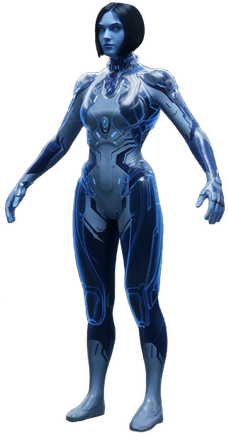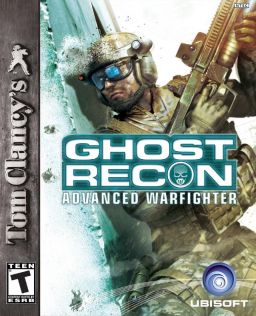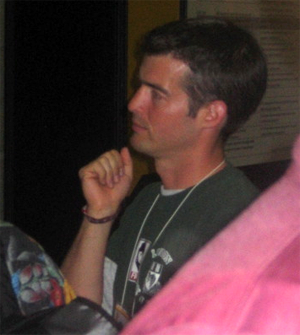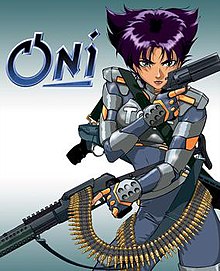
Myth is a series of real-time tactics video games for Microsoft Windows and Mac OS. There are three main games in the series; Myth: The Fallen Lords, released in 1997, Myth II: Soulblighter, released in 1998, and Myth III: The Wolf Age, released in 2001. The Fallen Lords was developed by Bungie, and published by Bungie in North America and Eidos Interactive in Europe. Soulblighter was also developed by Bungie, and was published by Bungie in North America and GT Interactive in Europe. The Wolf Age was developed by MumboJumbo, and co-published by Take-Two Interactive and Gathering of Developers for Windows and by Take-Two and MacSoft for Mac.

Tom Clancy's Ghost Recon is a tactical shooter video game developed by Red Storm Entertainment and published by Ubi Soft in 2001 for Microsoft Windows. It is the first game in the Ghost Recon series. It was ported to Mac OS, PlayStation 2 and Xbox in 2002 and to the GameCube in 2003. Ports for N-Gage and Game Boy Advance were planned, but later canceled. Unlike Clancy's other tactical shooter series, Rainbow Six, Ghost Recon is not based on any of his books.

Halo: Combat Evolved is a 2001 first-person shooter video game developed by Bungie and published by Microsoft Game Studios for the Xbox. It was released as a launch game for Microsoft's Xbox video game console on November 15, 2001. The game was ported to Microsoft Windows and Mac OS X in 2003. It was later released as a downloadable Xbox Original for the Xbox 360. Halo is set in the twenty-sixth century, with the player assuming the role of the Master Chief, a cybernetically enhanced supersoldier. The Chief is accompanied by Cortana, an artificial intelligence. Players battle aliens as they attempt to uncover the secrets of the eponymous Halo, a ring-shaped artificial world.

Halo 2 is a 2004 first-person shooter game developed by Bungie and published by Microsoft Game Studios for the Xbox console. Halo 2 is the second installment in the Halo franchise and the sequel to 2001's critically acclaimed Halo: Combat Evolved. The game features new weapons, enemies, and vehicles, another player character, and shipped with online multiplayer via Microsoft's Xbox Live service. In Halo 2's story mode, the player assumes the roles of the human Master Chief and alien Arbiter in a 26th-century conflict between the United Nations Space Command, the genocidal Covenant, and the parasitic Flood.

The Flood is a fictional parasitic alien lifeform and one of the primary antagonists in the Halo multimedia franchise. First introduced in the 2001 video game Halo: Combat Evolved, it returns in later entries in the series such as Halo 2, Halo 3, and Halo Wars. The Flood is driven by a desire to infect any sentient life of sufficient size; Flood-infected creatures, also called Flood, in turn can infect other hosts. The parasite is depicted as such a threat that the ancient Forerunners constructed artificial ringworld superweapons known as Halos to contain it and, as a last resort, to kill all sentient life in the galaxy in an effort to stop the Flood's spread by starving it.

Cortana is a fictional artificially intelligent character in the Halo video game series. Voiced by Jen Taylor, she appears in Halo: Combat Evolved and its sequels, Halo 2, Halo 3, Halo 4, Halo 5: Guardians and Halo Infinite. She also briefly appears in the prequel Halo: Reach, as well as in several of the franchise's novels, comics, and merchandise. During gameplay, Cortana provides backstory and tactical information to the player, who often assumes the role of Master Chief Petty Officer John-117. In the story, she is instrumental in preventing the activation of the Halo installations, which would have destroyed all sentient life in the galaxy.
Halo is a military science fiction media franchise, originally created and developed by Bungie and currently managed and developed by 343 Industries, part of Microsoft's Xbox Game Studios. The series launched in 2001 with the first-person shooter video game Halo: Combat Evolved and its tie-in novel, The Fall of Reach. The latest main game, Halo Infinite, was released in late 2021 as a free to play beta, and then had the campaign release later that year.

Brothers in Arms: Road to Hill 30 is a first-person shooter video game developed by Gearbox Software and published by Ubisoft for Xbox, Microsoft Windows and PlayStation 2. It is the first game in the Brothers in Arms series. The game takes place during World War II and focuses on tactics. It was ported to the Wii in 2008, as part of the Brothers in Arms: Double Time compilation.

Onimusha 3: Demon Siege, released in Japan and Europe as Onimusha 3, is a hack-and-slash action-adventure video game developed and published by Capcom. It is the third game of the Onimusha series and was released for the PlayStation 2 on April 27, 2004. It was later ported to Windows on December 8, 2005. The story focuses on the returning hero, swordsman Hidemitsu Samanosuke Akechi, who is in his quest to defeat his nemesis, Nobunaga Oda, who wishes to conquer Japan with his army of demons known as Genma. However, Samanosuke changes places with a French officer from the future named Jacques Blanc, and both have to adapt to their new worlds to get rid of Genma army and stop Oda Nobunaga's ambitions to conquer the world.

Summoner is an action role-playing game developed by Volition and published by THQ. It was released as a launch title for the PlayStation 2 in 2000, and was subsequently ported to Microsoft Windows and Mac OS the following year. In the game, the player plays the role of Joseph and can assemble a team of compatriots and summon powerful monsters. The game has a world map, involved storyline, and unique hybrid combat system involving real-time and turn-based mechanisms.

Tom Clancy's Ghost Recon Advanced Warfighter (GRAW) is a tactical shooter video game released for the Xbox 360, Xbox, PlayStation 2 and Microsoft Windows in 2006. As in previous Ghost Recon games, players command their team while neutralizing hostile forces and completing various mission objectives. These objectives can range from escorting friendly units across the map to rescuing hostages or taking out enemy artillery.

Martin O'Donnell is an American composer, audio director, and sound designer known for his work on video game developer Bungie's series, such as Myth, Oni, Halo, and Destiny. O'Donnell collaborated with his musical colleague Michael Salvatori for many of the scores; he has also directed voice talent and sound design for the Halo trilogy. O'Donnell was Bungie's audio lead until April 11, 2014.

Jason Jones is an American video game developer and programmer who co-founded the video game studio Bungie with Alex Seropian in 1991. Jones began programming on Apple computers in high school, assembling a multiplayer game called Minotaur: The Labyrinths of Crete. While attending the University of Chicago, Jones met Seropian and the two formed a partnership to publish Minotaur.

Top Gun: Combat Zones is a combat flight simulation game named after the 1986 film Top Gun. It was developed by British studio Digital Integration and published by Titus Interactive. It was originally released for the PlayStation 2 in 2001, followed by a GameCube version in 2002. Versions were also released for the Game Boy Advance and Microsoft Windows.

Michael C. Salvatori is an American composer best known for his collaboration with colleague Martin O'Donnell for the soundtracks to the Halo video game series. Salvatori became acquainted with O'Donnell in college; when O'Donnell was given a job offer to score a colleague's film, Salvatori and O'Donnell formed a partnership and eventually created their own production company, TotalAudio. Salvatori continued to manage TotalAudio and worked on his own music for clients such as Disney and Wideload Games.

Halo 3: ODST is a 2009 first-person shooter game developed by Bungie and published by Microsoft Game Studios. The fifth installment in the Halo franchise as a side game, it was released on the Xbox 360 in September 2009. Players assume the roles of United Nations Space Command Marines, known as "Orbital Drop Shock Troopers" or ODSTs, during and after the events of Halo 2. In the game's campaign mode, players explore the ruined city of New Mombasa to discover what happened to their missing teammates in the midst of an alien invasion. In the "Firefight" multiplayer option, players battle increasingly difficult waves of enemies to score points and survive as long as possible; Halo 3's multiplayer is contained on a separate disc packaged with ODST.
Japanese cyberpunk refers to cyberpunk fiction produced in Japan. There are two distinct subgenres of Japanese cyberpunk: live-action Japanese cyberpunk films, and cyberpunk manga and anime works.

Halo: Reach is a 2010 first-person shooter video game developed by Bungie and published by Microsoft Game Studios, originally for the Xbox 360. The sixth installment in the Halo series and a direct prequel to Halo: Combat Evolved, Reach was released worldwide in September 2010. The game takes place in the year 2552, where humanity is locked in a war with the alien Covenant. Players control Noble Six, a member of an elite supersoldier squad, when the human world known as Reach falls under Covenant attack.
Bungie, Inc. is an American video game company based in Bellevue, Washington, and a subsidiary of Sony Interactive Entertainment. The company was established in May 1991 by Alex Seropian, who later brought in programmer Jason Jones after publishing Jones's game Minotaur: The Labyrinths of Crete. Originally based in Chicago, Illinois, the company concentrated on Macintosh games during its early years and created two successful video game franchises called Marathon and Myth. An offshoot studio, Bungie West, produced Oni, published in 2001 and owned by Take-Two Interactive, which held a 19.9% ownership stake at the time.

Destiny is an online first-person shooter video game developed by Bungie. It was released worldwide on September 9, 2014, for the PlayStation 3, PlayStation 4, Xbox 360, and Xbox One consoles. Destiny marked Bungie's first new console franchise since the Halo series, and it was the first game in a ten-year agreement between Bungie and Activision. Set in a "mythological science fiction" world, the game features a multiplayer "shared-world" environment with elements of role-playing games. Activities in Destiny are divided among player versus environment (PvE) and player versus player (PvP) game types. In addition to normal story missions, PvE features three-player "strikes" and six-player raids. A free roam patrol mode is also available for each destination which feature public events. PvP features objective-based modes, as well as traditional deathmatch game modes.


















